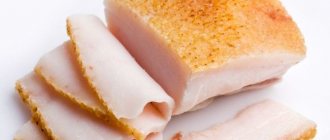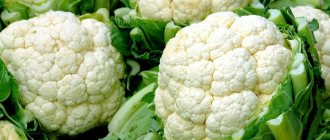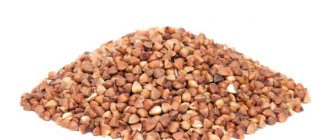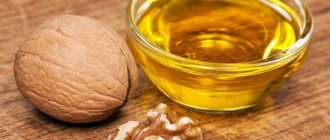Chicken is a valuable dietary food product that has many beneficial properties. White poultry meat is necessary for a woman’s full recovery after childbirth. A large amount of protein in the product forms and strengthens muscles, bones and tissues. Protein has a positive effect on mental activity, gives energy and strength, and relieves physical fatigue.
However, when breastfeeding, you should be careful when eating chicken, as it often causes allergies in infants. You need to start introducing meat into a nursing mother's diet with meat broths, then move on to stewed or boiled beef. From the third to fourth week of lactation, rabbit, turkey and chicken can be introduced.
Beneficial features
- Forms and renews tissues, blood and immune cells;
- Regulates and ensures normal metabolism;
- Increases resistance to stress and helps withstand physical activity,
- Chicken broth stimulates digestion and improves appetite;
- Has a beneficial effect on the nervous system;
- Fights excess weight;
- Helps with joint and eye diseases;
- Responsible for the functioning of the heart and blood vessels;
- Improves sleep and fights insomnia;
- Increases immunity.
Compound
| Elements | Beneficial effect for the body | Contents of 100 grams of chicken |
| Vitamin A (retinol) | Improves and maintains visual acuity, restores tissue, promotes nail growth and prevents hair loss, increases skin elasticity | 72 mcg |
| Vitamin B1 (thiamine) | Positively affects the functioning of nerve cells, helps with constipation, relieves stress and relieves fatigue, stimulates physical activity | 70 mcg |
| Vitamin B2 (riboflavin) | Burns sugar, improves skin condition and prevents the formation of wrinkles, preserves vision and regulates digestion. | 0.2 mg |
| Vitamin B4 (choline) | Regulates the activity of nerve cells, reduces cholesterol and fatty acids in the body, restores the liver and removes toxins | 76 mg |
| Vitamin B5 (pantothenic acid) | Participates in metabolism, regulates cholesterol levels in the blood, stimulates brain function and ensures the normal functioning of nerve cells | 0.8 mg |
| Vitamin B6 (pyridoxine) | Plays an important role in material metabolism, lowers cholesterol levels, prevents the development of anemia, radiculitis and neuritis | 0.5 mg |
| Vitamin B9 (folic acid) | Calms and fights stress, improves mood, energizes and optimism, improves appetite and prevents liver diseases | 4.3 mcg |
| Vitamin C (ascorbic acid) | Increases immunity and resists infectious diseases, improves mood and gives vigor, strengthens blood vessels | 1.8 mg |
| Vitamin E (tocopherol) | Normalizes hormonal levels, slows down aging, restores tissue and regulates blood circulation, supports immunity | 0.5 mg |
| Vitamin H (biotin) | Stabilizes the state of intestinal microflora, stimulates the growth of nails and hair, lowers blood sugar levels | 10 mcg |
| Vitamin PP (niacin) | Produces energy, regulates the functioning of the heart and blood vessels, normalizes blood circulation, prevents diabetes and blood clots | 12.5 mg |
| Calcium | Forms and strengthens the bone skeleton, tooth enamel, participates in blood clotting and reduces vascular permeability | 16 mg |
| Potassium | Stimulates the activity of brain cells and supplies the brain with oxygen, stabilizes blood pressure | 194 mg |
| Magnesium | Relieves stress, suppresses depression, participates in blood clotting processes, normalizes intestinal function | 18 mg |
| Sodium | Responsible for water-salt metabolism in the body, regulates digestion and maintains blood pressure | 70 mg |
| Sulfur | Forms bone and cartilage tissue, normalizes the functioning of ligaments and joints, strengthens muscles, relieves joint pain and helps with cramps | 186 mg |
| Phosphorus | Strengthens bones, teeth and nails, improves memory and concentration, normalizes kidney and heart function | 165 mg |
| Chlorine | Relieves swelling, ensures normal water-salt balance, improves liver function | 77 mg |
| Iron | Protects the body from bacteria, normalizes metabolism, forms immune cells | 1.6 mg |
| Zinc | Improves attention and memory, stimulates nail and hair growth, normalizes blood sugar levels, heals wounds | 2.1 mg |
| Copper | Participates in hematopoiesis, increases immunity and improves digestion, strengthens the walls of blood vessels, saturates cells with oxygen | 76 mcg |
| Chromium | Regulates heart function, lowers cholesterol and normalizes blood pressure, removes toxins from the body, strengthens bones and prevents osteoporosis | 9 mcg |
| Fluorine | Forms and strengthens teeth and bones, normalizes hematopoiesis, strengthens the immune system and removes salt from the body | 130 mcg |
Boiled chicken during lactation
Chicken has long been known as one of the most dietary and at the same time valuable foods with many beneficial qualities. White poultry meat is especially valuable for restoring the female body after childbirth. If you have undergone surgery at the time of childbirth, doctors will definitely prescribe you chicken broth.
A sufficiently large amount of protein contributes to the full formation of muscles in a newborn and the strengthening of your muscles, bone skeleton and tissues. Chicken meat is rich in it. Protein also enhances mental activity, saturates you with a lot of energy, gives you strength, and relieves accumulated physical fatigue.
In addition, chicken meat is rich in B vitamins, which have a positive effect on the functioning of the nervous system.
Useful elements in meat
Let's briefly consider other useful elements that make up chicken (per 100 g of chicken).
- Potassium (195 mg). Activates brain activity, normalizes blood pressure, supplies the body with oxygen.
- Calcium (192 mg). Forms the basis of the bone skeleton, strengthens tooth enamel, reduces vascular permeability.
- Sulfur (185 mg). Responsible for the formation of bone and cartilage tissue, relieves headaches, and helps joints function.
- Phosphorus (163 mg). Controls concentration, improves memory, and is responsible for the condition of bones, nails and teeth.
- Fluoride (137 mg). Helps remove salts from the body, stabilizes hematopoiesis, improves immunity.
- Vitamin A or retinol (75 mcg). Responsible for the preservation of vision, improves it, affects the rapid growth of the nail plate, stops hair loss, and gives elasticity to the skin.
- Vitamin B1 or thiamine (72 mcg). It has a beneficial effect on the nervous system, improves digestion, helps during periods of stress, and relieves fatigue.
- Vitamin B4 or choline (71 mcg). Normalizes the functioning of nerve cells, reduces cholesterol, helps remove cholesterol plaques, and has a positive effect on liver function.
Boiled chicken during breastfeeding, precautions
However, we still recommend caution when consuming chicken during lactation.
Chicken can cause allergies in infants due to its histamine content.
Start introducing it into your diet with broths based on chicken meat (be sure to drain the primary broth, since most of the harmful substances contained in meat are released into it).
Gradually introduce stewed or boiled poultry into the menu.
Start trying any dish with a small amount, preferably in the morning, so that during the day you have time to track the baby’s reaction and avoid the well-known colic.
If you notice a negative reaction from your baby to your milk after eating chicken, temporarily remove it from the diet and try again after a week.
Tips for purchasing chicken meat
Choose your chicken meat responsibly. Modern industrial chicken breeding leads to the accumulation of harmful and even dangerous microelements in poultry meat.
Remember that chicken contains antibiotics, chemicals, preservatives and the like; industrial chicken meat is often subject to special injections and chlorine treatment to extend shelf life.
In accordance with this, we recommend that you purchase whole chicken or its individual components only in trusted places: farm stores, from friends who breed birds.
Make sure that they do not sell you a rooster carcass instead of a chicken, because rooster meat broth takes many times longer to cook and has a specific smell.
Risk of eating chicken while breastfeeding
Due to the histamine content in chicken, the risk of an allergic reaction in infants increases. Therefore, you can introduce poultry into your diet while breastfeeding very carefully. For the first time, try a small piece and monitor the baby’s well-being for two days. If there is no negative reaction, you can eat the chicken. However, remember to eat wisely!
If there are negative consequences, postpone the administration of the product. You can try again in at least a month. During this time, the baby's digestion will become stronger and may accept new food.
A nursing mother can eat chicken only after thorough heat treatment, since fresh meat often contains harmful and dangerous elements. Don’t forget that when raising poultry, producers give chickens antibiotics, preservatives and other chemicals, make special injections and treat them with chlorine for long-term storage. Therefore, it is better to eat poultry.
If you do buy chicken, do not buy frozen or vacuum-packed meat, as you may find expired goods there. Fresh meat is characterized by a pleasant color and the absence of foreign odors.
Chicken should not be consumed if the mother or baby has a protein allergy. In this case, it is necessary to adhere to a special hypoallergenic diet, which can be found at the link https://vskormi.ru/mama/gipoallergennaya-dieta-dlya-kormyashhix-mam/.
Chicken recipes for nursing
Puree soup with vegetables
- Chicken broth – 2 liters;
- Potatoes – 3 medium pieces;
- Zucchini – 1 medium piece;
- Carrots – 1 medium size;
- Green onion – 1 piece;
To cook the broth, take the breast. Strain the chicken broth and put on fire. Peel and cut the vegetables, add them to the boiling broth. Divide the cooked and cooled meat into pieces and add to the soup when the vegetables are cooked. Afterwards, pass the contents through a blender, sprinkle the puree with chopped green onions.
Soup with fennel and zucchini
- Chicken broth – 1 liter;
- Fennel – 2 fresh roots;
- Zucchini – 1 medium fruit;
- Butter – 1 tbsp. spoon;
- Dill and parsley.
Chop the zucchini and fennel. Fry the roots in butter for five minutes, then the zucchini and simmer the vegetables for 5-7 minutes. Cut the cooked breast and add it to the broth along with the stewed vegetables. Cook for about 6 minutes and sprinkle with fresh herbs.
Chicken salad with apples
- Boiled chicken breast – 200 g;
- Green apples without peel - 2 medium fruits;
- A bunch of lettuce;
- For dressing - lemon juice, salt and olive oil.
Cut the chicken and apples, tear the leaves and mix the products. Season with salt, olive oil and a few drops of lemon juice.
Chicken salad with walnuts
- Boiled chicken fillet – 200 g;
- Boiled chicken eggs – 2 pieces;
- Green apple without peel - 1 piece;
- Grated hard cheese – 100 g;
- Chopped walnuts – 1 tbsp. spoon;
- For dressing - 150 ml of low-fat sour cream or natural yogurt without additives.
To make walnuts easier to digest and better absorbed in the baby's body during breastfeeding, you need to finely crush and soak the product. Cut the fillet, apple and eggs. Place the egg in the first layer, then meat, nuts, apple and grated cheese. Coat each layer with yogurt or sour cream, add salt if necessary.
Rolls with chicken or cottage cheese
- Boiled chicken fillet – 300 g;
- Low fat cottage cheese – 100 g;
- Grated hard cheese – 60 g;
- Cream 10%;
- Dill.
Beat grated cheese, cottage cheese and dill in a blender until smooth. Cut the chicken fillet in half, brush each half with the curd and cheese mixture and roll into rolls. Bake in the oven for 40 minutes.
Baked chicken with zucchini
- Chicken breast – 500 g;
- Zucchini – 2 medium-sized pieces;
- Water -1 tbsp. spoon;
- Grated hard cheese – 150 g;
- Parsley, salt and pepper.
Grease a baking sheet with butter. Cut the zucchini into rings and place tightly on a baking sheet, add salt. Place chicken cut into large pieces on top. Pepper, add water, sprinkle with parsley and grated cheese. Bake for 25 minutes at 180 degrees.
This is a versatile recipe for baked chicken with vegetables. Instead of zucchini, you can use cauliflower, tomatoes, potatoes and pumpkin. You just need to choose the right baking time. When cooking with tomatoes, bake for 30 minutes, with potatoes and cabbage - 40, with pumpkin - 20. You can use several vegetables at once, add carrots and sour cream.
When composing a diet, a nursing mother thinks about the quantity and type of food that she needs during such a crucial period of life. Not only variety, but also balance of food is important. Meat during breastfeeding is a source of animal protein, which ensures the growth of the baby and the restoration of the female body. However, not every type of meat is healthy for a nursing mother.
Most pediatricians and nutritionists unanimously support the use of chicken during breastfeeding. Experts note the usefulness of white chicken meat for restoring the body's strength during the postpartum period. However, the approval for this product is issued with some reservations, which affect the methods of preparing chicken dishes and the choice of parts of the bird carcass. Let's find out whether a nursing mother can eat chicken and in what form.
Chicken while breastfeeding: benefits and harms, recipes
articles:
If you decide that you will breastfeed your baby, then you will have to be careful about your diet, because all the components of food, along with mother's milk, enter the baby's body.
Mommy's diet is fundamentally different from the diet of an ordinary person. All products must be safe and beneficial for the baby’s fragile body.
In this article we will talk about the benefits and harms of chicken during breastfeeding, and consider good recipes.
Can a nursing mother eat chicken?
Chicken is a valuable food product recommended by nutritionists. But is all chicken meat healthy, so you should know in what form it can be consumed so that the food brings benefits to both the mother and her baby.
Quality of chicken meat
Chicken meat contains protein, which is vital for building the baby's muscular system. B vitamins, which chicken meat is also famous for, have a beneficial effect on the formation of the baby’s nervous system.
Doctors call chicken meat dietary and recommend eating it for cardiovascular diseases, various visual disorders, insomnia, excess weight, to increase the body's protective properties, as well as to restore strength in the postoperative or postpartum periods.
Boiled chicken meat, steamed cutlets, and chicken broth are prescribed by doctors in the postoperative period to restore the strength of a weakened body. However, not all chicken meat is beneficial for a nursing mother.
Bird selection
Popular chicken legs and broiler meat raised on a poultry farm should be immediately excluded from the menu of a nursing mother. This bird was fed feed containing various additives, hormones and medications.
Such meat can cause a baby’s tummy ache or an allergic reaction, and such consequences are absolutely undesirable for either the baby or his mother. Therefore, it is advisable to buy poultry, or, as a last resort, meat from a local, trusted producer.
It is advisable to purchase a medium-sized bird; a very large one does not inspire confidence. You should not purchase frozen or vacuum-packed chicken, so as not to purchase a spoiled or expired product. Fresh meat has a pleasant color and does not have an unpleasant odor.
The protein contained in poultry meat is very useful for a growing body, so you can’t do without meat completely, however, try not to eat it too often.
The healthiest meat
The greatest benefit from chicken lies in the breast, the meat of which is truly dietary. It contains no fat, so nutritionists recommend this part of the carcass first to nursing mothers.
If you find it difficult to give up meat dishes, try to eat lean, dietary chicken breast meat whenever possible. The cooking time for the breast should be at least an hour, because it is during this time that the harmful organisms contained in any meat completely die.
This simple procedure will protect the mother and her baby from unwanted consequences. A nursing mother can also use chicken broth.
The most harmful parts of the carcass
The leg is the most harmful part of a chicken carcass, characterized by a high fat content. The skin of chicken is also harmful to health, which is characterized not only by its high fat content, but also by harmful substances that tend to accumulate in the skin and can lead to stomach illness in the baby. The skin should be removed from the carcass before heat treatment.
Chicken can cause allergic reactions in infants, so you should not overuse chicken meat. The most allergenic, and therefore potentially harmful parts of the chicken are the legs, skin and wings.
Fried or smoked chicken meat will not have the best effect on the quality of breast milk, as it contains a high content of fat and harmful substances.
Existing risk
Chicken meat should be introduced into the diet with caution due to its histamine content. Try to do this gradually - first try a small piece and carefully observe the baby’s well-being for two days.
If there are no negative consequences, you can include chicken in your menu, but do not forget about a sense of proportion. If your child has any unpleasant reaction, you should postpone using this product for a while. In a month you can repeat your attempt - during this time the baby’s body will get a little stronger.
Do not forget that during lactation you can eat chicken only after thorough heat treatment.
Doctors advise!
The desire to minimize harm to the child, constant restriction of food, superimposed on numerous other restrictions for nursing mothers, can cause postpartum depression in women, which can bring nothing good to either the mother or her baby. Therefore, psychologists advise not to infringe on yourself in everything by eating only tasteless lean dishes. The food of a nursing mother should be balanced, tasty, healthy, and also bring the woman not only a feeling of satisfying hunger, but also aesthetic pleasure.
Cooking chicken
Doctors advise breastfeeding women to eat boiled, stewed or baked chicken. Fried or smoked poultry is difficult to digest and contains harmful cholesterol, which can lead to vasoconstriction, cause bloating in the baby and even poisoning.
Be sure to wash the meat before cooking, remove the skin and veins.
The bird should be boiled or baked for at least an hour, and when preparing first courses, 3-4-5 minutes after boiling, drain the first broth, add water and cook food only in the second broth.
Chicken recipes for nursing mothers
You can find several recipes that will help you prepare a tasty, healthy dish and diversify your diet.
Puree soup with vegetables
You will need: • chicken broth – 2 liters; • 3-4 medium potatoes; • 1 medium zucchini; • 1 medium sized carrot; • green onions and herbs – 1 small bunch;
Preparation:
For the broth, peel the breast, 5 minutes after boiling, strain the broth, add water and put it back on the fire. Peel and cut the vegetables, add them to the prepared boiling broth. Cut the finished meat into pieces and add to the soup after the vegetables are ready. Pass the finished soup through a blender, sprinkle the resulting puree with herbs.
Salad with apples and chicken
For this delicate salad you need: • boiled chicken breast – 200 g; • 2 medium-sized green apples; • a bunch of lettuce; As a dressing for this sala, we use lemon juice, olive oil and salt to taste.
Preparation:
Cut the chicken and apples into strips or cubes, tear the lettuce leaves and mix the ingredients. Salt to taste, add dressing. It is advisable to peel the apples. If you really want, you can take a red apple, just don’t forget to peel the skin.
Chicken roll
For this wonderful dish you need to take: • chicken breast (fillet) – 700 gr. • paprika – 20 gr. • 3 cloves of garlic; • 30 gr. Instant gelatin; • greens, ground pepper. • salt – to taste.
Preparation:
The fillet is cut into small cubes and then mixed with the rest of the ingredients. The resulting mixture must be placed in a baking sleeve, formed into a roll and placed in an oven preheated to 150 degrees for an hour. Remove the finished dish, after it has cooled to room temperature, place in a cool place for at least 5 hours. After the specified time has passed, the roll can be removed from the sleeve and served on the table in slices, garnishing them with herbs. If desired, you can add boiled vegetables, cut into small cubes or pieces of hard cheese to the roll.
Chicken baked with zucchini
This is an original and tasty dish for which you will need: • chicken breast – 500 g; • 2 medium zucchini; • 1 tbsp. spoon of water; • 150 gr. hard cheese, grated on a coarse grater; • parsley, salt and pepper Cut the zucchini into rings and place tightly on a baking sheet greased with butter. Large pieces of chicken are placed on top.
Salt, pepper, sprinkle with grated cheese and herbs. You need to bake the dish for 25-30 minutes at a temperature of 180 degrees. This is a universal recipe for baking chicken breast. For nursing mothers, there are many other options for cooking chicken in the oven. For example, the breast can be baked with potatoes, cauliflower, tomatoes or pumpkin.
Only the cooking time will change; potatoes will have to be baked for at least 40 minutes, tomatoes - 30 minutes, and pumpkin will be ready in 20 minutes. You can use several vegetables at once, add carrots and sour cream.
A woman does not need to prepare these dishes just for herself; your family will be able to appreciate such a delicious variety and will be happy to join your table. And you won’t have to feel upset by constant restrictions.
Latest materials in the section:
Breastfeeding isn't just good for your baby
Breastfeeding is rightfully considered the healthiest nutrition for a baby; it is a priceless gift from a mother to her child. Everything you need to know about the benefits of breastfeeding for...
What to do to stop breast milk
Breastfeeding brings great pleasure to women, because it creates special contact between mother and baby. But the main goal of providing a child with natural food is to strengthen...
Ibuprofen while breastfeeding
As you know, the mother’s condition has a strong influence on the child. Therefore, pregnant women need to be careful when planning their diet and choosing medications, as they...
Source: https://birth-info.ru/151/Kuritsa-pri-grudnom-vskarmlivanii-polza-i-vred—retsepty/
What is the value of chicken meat?
Poultry meat is rich in protein, which the baby’s body requires for growth and development of the muscular system. It also contains a lot of B vitamins, which have a positive effect on the activity of the nervous system. Doctors recommend eating chicken meat for those who suffer from:
- joint diseases;
- problems with the cardiovascular system;
- eye diseases;
- obesity;
- reduced immunity;
- insomnia.
Therapeutic nutrition includes special chicken dishes that can be eaten in such cases. As a rule, the menu includes boiled meat, steamed chicken cutlets, broth and light soups. Which of the following is suitable for a nursing mother, what masterpieces can she prepare from tasty and healthy white meat, so as not to harm herself and her little treasure? We will try to highlight the answers to these questions in our review.
What do neonatologists advise?
Neonatologists have a categorically negative opinion about chicken meat. Professionals, under whose care our babies are from the first minutes of life, classify it as a dangerous product, pointing out the high content of urea in it, which negatively affects the baby’s brain. In addition, they are also alarmed by the dubious process of raising poultry, when producers stuff it with antibiotics and other growth stimulants. However, in maternity hospitals you will be served both chicken soup and stewed chicken. How to reconcile polar opinions and treat yourself to your favorite product without harm to your health?
Baked, boiled, smoked poultry
How to properly cook chicken? Let's look at other ways to use the product:
- Pediatricians, nutritionists and experienced housewives will tell you that during the infancy period, when the baby is fed milk, it is best to bake meat in the oven. Why is baked chicken healthier and safer than fried or smoked chicken? With this method of cooking, poultry retains all the beneficial substances, it contains few calories, and has an excellent taste. The main thing is not to use various spicy and allergenic seasonings and sauces when baking in the oven.
- Of course, the most ideal option is to simply boil the poultry meat. Naturally, keeping in mind that legs, wings and legs are contraindicated for breastfeeding mothers - they contain few useful elements, but are high in fat and calories.
- You can grill a bird by excluding seasonings and carefully removing the skin from the finished carcass, but not in the first months after birth. Parts of the carcass that are dangerous for a nursing mother can be eaten by other family members, but the breast is suitable for you.
Regarding smoked meat during breastfeeding, all pediatricians and nutritionists speak negatively. A smoked product is not very useful for an ordinary person; it is doubly undesirable when the life and development of a newborn baby depends on the quality of milk. The methods by which the poultry is smoked and the quality of the poultry itself are also questionable. It’s better to stay away from such dishes and not put the health of your little treasure at risk.
In a child's diet
The baby is growing and only breast milk is not enough for him
, and they begin to gradually introduce “adult food” into his diet. Chicken is no exception. It is very necessary for a child; it contains useful elements that contribute to the healthy development of the baby.
At what age should it be included in complementary foods/food?
Meat dishes, incl. Chicken is given to the child to try after introducing vegetables, cereals and fruits into his diet. After six months of age, at about 7-8 months. By that time, the body will already be adapted and gain strength to accept such food.
How to use?
Due to the fact that at an early age the baby does not have the skills to chew food and does not have teeth, it is worth feeding chicken meat in the form of puree. Pre-boil it for at least 1 hour or simmer for the same time. It is worth remembering that your baby should not be given chicken thighs, legs and wings as complementary foods.
Important! Ideal for a baby is “white meat” - breast. It is less fatty and better absorbed
How can it be useful?
Chicken meat contains many useful substances
, which the body can only receive together with foods; it does not produce them itself:
- Essential acids that ensure protein metabolism and restoration of muscle cells.
- Glutamine, which is part of chicken meat, promotes muscle development.
- Chicken protein contains 92% of amino acids essential for a growing child's body.
Chicken in salads
Boiled meat can be used to make salads. We offer you one of the recipes:
- Set of products: 300-400 grams of boiled fillet, 100 grams of cherry tomatoes, 100 grams of hard cheese, lettuce, olive oil for dressing, salt to taste, lemon juice.
- All main ingredients must be cut into cubes, seasoned with oil, poured with lemon juice, salt and stir. You can add dried pieces of bread. The result is a light and satisfying salad, with a rich set of vitamins that you need so much during an important period of your life.
Which parts of chicken should you eat with caution?
Many women ask whether it is possible to eat chicken hearts and gizzards while breastfeeding. Hearts are among the most high-calorie parts of poultry. If you plan to get your figure in order after childbirth, it is better to avoid them. Neither you nor your baby need extra fat. However, they also contain a lot of useful substances.
If you really want something made from hearts, try to cook them correctly. Poorly or incorrectly prepared offal is bitter and does not give pleasure. When cooking, the heart must be washed and visible fatty deposits removed. Boiled and stewed hearts should not be heavily seasoned with various spices; make do with a minimal amount of additives. Obviously, a fried product is not suitable for you, but sometimes you can afford boiled hearts.
When choosing between offal, pay attention to poultry liver. Tender, quick to prepare, it is rich in healthy elements. Vitamins are widely represented in it, there is calcium and iron, amino acids and minerals, copper and zinc. Riboflavin, contained in the liver, improves the functioning of the gastrointestinal tract and helps the body absorb iron. The liver supplies the thyroid gland with iodine and selenium.
What can a nursing mother eat?
Every woman after giving birth is informed by doctors what a nursing mother can eat to avoid a reaction from the baby. The diet of a nursing mother should be varied, and the dishes contain many useful microelements. In this case, the composition of breast milk will be complete. According to breastfeeding experts, a nursing mother’s daily nutrition should consist of:
- 20% proteins;
- 60% carbohydrates;
- 15% fat.
Special attention is paid to the drinking regime. In the first 6 months of breastfeeding, up to 1 liter of breast milk is synthesized in the mammary glands daily, so the body needs an additional volume of fluid - at least 2–2.5 liters per day
In this case, the basis of nutrition should be cereal soups and fermented milk products.
What can a nursing mother eat - food list
Most women, immediately after the birth of their baby, have a question about what foods a nursing mother can eat. Breastfeeding experts recommend including the following foods in your diet:
- Vegetables.
The first month they are consumed stewed, boiled or baked: potatoes, cauliflower, carrots, bell peppers, zucchini, eggplant. - Fruits.
In the first months of the baby’s life, the mother is allowed to eat bananas and baked apples. From the 3rd month, one fruit is added to the diet and the baby’s reaction is observed. When talking about what fruits a nursing mother can eat, experts advise that it is better to avoid red berries, pears, grapes, plums, and citrus fruits. - Porridge.
Cereals form the basis of a young mother's diet. They perfectly help to establish proper digestion and improve the functioning of the gastrointestinal tract. Oatmeal, buckwheat, millet, pearl barley - you can eat any porridge. They must be prepared in water so as not to cause an allergy in the baby to cow's milk protein. - Soups.
Liquid meals have a positive effect on lactation, so they should be included in the daily diet of nursing mothers. Preference should be given to low-fat soups, with vegetable broth, without frying. - Meat.
Helps restore strength after childbirth, saturates the body with necessary protein. It is recommended to eat low-fat varieties: veal, beef, rabbit, lamb. - Cheeses.
Preference should be given to unsalted and low-fat varieties. - Fish.
It is an indispensable source of phosphorus and minerals that are important for the supporting apparatus. Fish can only be eaten stewed or boiled. Smoked, fried, dried, dried fish is prohibited. - Dairy products.
Starting from the second week, you can gradually introduce dairy products into the diet - cottage cheese, yogurt, kefir, fermented baked milk.
What a nursing mother should not eat - food list
Some foods for a nursing mother are prohibited for the entire period of breastfeeding. In most cases, this applies to dishes and products that can provoke allergies in the baby. It is necessary to exclude from the diet:
- chocolate, homemade baked goods made with yeast, sweets with flavors and dyes;
- any types of canned food (meat, fish, vegetables);
- semi-finished products;
- pickled vegetables;
- products with a high content of seasonings and spices;
- smoked meats;
- salo;
- sausages, sausages;
- beans, peas;
- radish;
- radish;
- exotic fruits, citrus fruits, strawberries.
What can a nursing mother drink?
As noted above, nursing mothers should drink plenty of fluids. This is necessary to maintain the lactation process. The synthesis of milk, which is based on water, is impossible if there is a lack of fluid in the body
It is important to take into account that the daily volume of fluid entering the body should be 2–2.5 liters. This includes all products that are consumed in liquid form:
- soups;
- compotes;
- water;
- milk.
It is worth noting that there are a number of restrictions in the choice of drinks for nursing. She can determine whether a nursing mother can use milk experimentally: if after a small portion of cow’s milk there is no reaction from the baby, the product can be consumed. In addition, many women often ask doctors whether nursing mothers can drink coffee. This drink has a tonic effect on the nervous system, so it can cause anxiety and sleep disturbances in both mother and baby.
During breastfeeding the following are prohibited:
- alcoholic drinks;
- strong tea;
- carbonated drinks.
How to cook chicken cutlets during breastfeeding?
Undoubtedly, cutlets or meatballs that are tasty and healthy for a nursing woman’s body will expand the menu and allow you to eat with pleasure. A variety of recipes allows you to choose the one that suits your taste. Remember only one thing: for minced meat you should use fillet or breast. A good addition to your menu will be an original recipe for meatballs, which combine minced meat and vegetables.
When preparing chicken cutlets, a nursing mother should refrain from adding spices to the dish.
How to prepare the dish:
- Prepare 4 breasts, 2 eggs, 50 grams of hard cheese, 300 grams of broccoli, 200 grams of carrots, 2 tablespoons of breadcrumbs or bread crumbs, 1 liter of vegetable broth.
- We scroll through the taken parts of the bird in a meat grinder. Stew vegetables (carrots and broccoli) in broth.
- Beat eggs and grate cheese (we recommend reading: is cheese good for breastfeeding?).
- Add them to the minced meat and knead.
- Separate 3-4 broccoli florets from the stewed vegetables, chop them into small pieces, add them to the minced meat (see also: is broccoli good for breastfeeding?).
- We make balls of any size.
- Pour the broth into a frying pan (take a dish with high sides), put the meatballs in it and simmer until done.
- To salt or not to salt the dish is up to you.
Menu for a nursing mother - recipes
To diversify a nursing mother's diet, you need to consult a cookbook or search for recipes on the Internet. Today there are a lot of tasty and healthy dishes that are suitable as main dishes for women during lactation. Let's name a few popular recipes.
Zucchini and fennel soup
Ingredients:
- fennel – 2 small roots;
- small zucchini - 1 pc.;
- chicken broth – 1 l;
- butter – 1 tbsp. spoon;
- parsley;
- dill;
- salt.
Preparation
- Fennel root and zucchini are finely chopped and fried in butter for 5 minutes.
- Simmer for 5–10 minutes.
- The boiled chicken is chopped and added to the broth along with vegetables.
- Boil for 7–10 minutes, sprinkle with fresh herbs.
Cottage cheese casserole
Ingredients:
- cottage cheese – 500 g;
- chicken egg – 1 pc.;
- flour - 3 tbsp. spoons;
- sour cream – 2 tbsp. spoons;
- sugar – 3 tbsp. spoons.
Preparation
- Flour is mixed with cottage cheese, eggs are beaten with sugar.
- The curd and egg-sugar masses are mixed.
- The baking dish is greased with oil, the curd mixture is laid out and soaked in sour cream.
- Bake for 40 minutes at 180 degrees.
Nutrition during normal lactation
A properly formulated, balanced diet for a nursing mother does not require correction. When milk is produced in sufficient quantities, mothers do not experience problems with lactation. The baby is quickly gaining weight, his body weight corresponds to the established age standards. If the child weighs less than expected, he does not have enough milk, he needs to eat foods that stimulate lactation.
Nutrition to increase lactation
To enhance the process of breast milk production, a woman is recommended to include special dishes in her diet. Experts recommend consuming the following lactation products for a nursing mother:
- beef (boiled, baked);
- lemon balm tea;
- tea with mint;
- fennel tea;
- tea with anise;
- dried fruits compote;
- baked vegetables and fruits;
- dairy products.
Nutrition for weight loss during breastfeeding
Experts do not advise taking measures to lose weight, so when a woman asks whether a nursing mother can follow a diet, the answer is negative. During the first 6 months after birth, this is out of the question. At this time, active restoration of the body occurs. However, many young mothers are in a hurry to regain their previous shape. The menu of a nursing mother who wants to lose weight should contain products with a total calorie content of at least 1800 kcal/day.
Knowing what a breastfeeding mother can eat, she must adhere to the following principles:
- Meals are small and frequent - 300–350 g of food at a time, 5-6 times a day.
- Do not eat 4 hours before bedtime.
- Adequate drinking – 2–2.5 liters per day.
- At least 100 g of protein per day.
- Taking vitamins (Vitrum Prenatal Forte, Elevit Pronatal).
Nutrition for a nursing mother with allergies in a child
Nutrition during breastfeeding, if the child has an allergic reaction, requires special attention. All foods with allergenic properties should be excluded from the diet.
The list of products for a nursing mother should not include allergens:
- cocoa;
- fish;
- eggs;
- red berries;
- nuts;
- seafood;
- industrially prepared canned food;
- fatty meats;
- offal (liver, kidneys).










